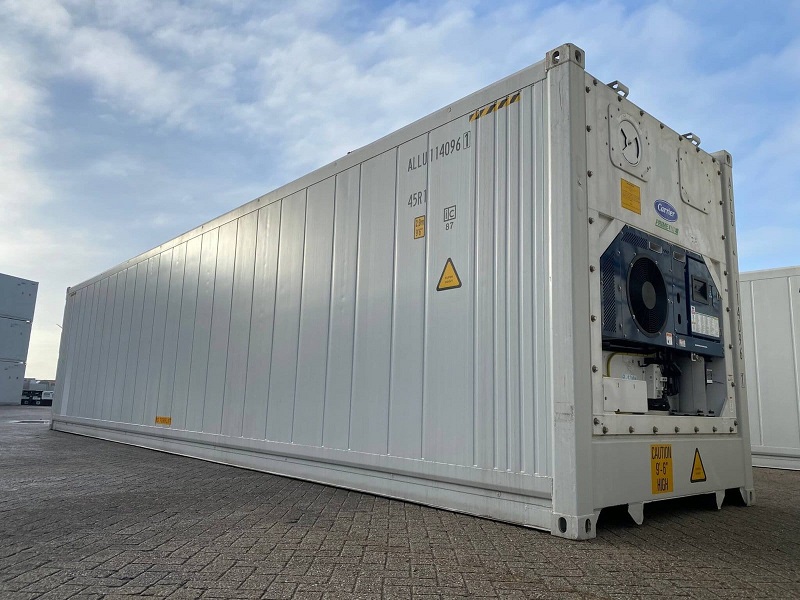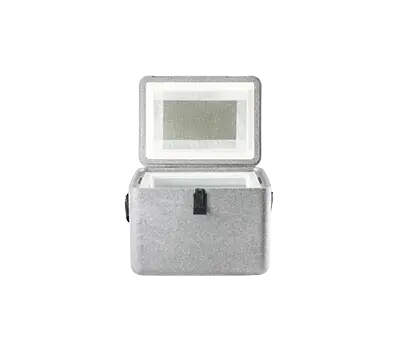When it comes to shipping goods, particularly those that require temperature control, two types of containers often come into play: reefer containers and insulated containers. While they might seem similar at first glance, these containers serve different purposes and have distinct features. Understanding the differences between them is crucial for businesses involved in transporting temperature-sensitive products.
A reefer container, short for refrigerated container, is designed to maintain a specific temperature range to preserve perishable goods during transportation.
The defining feature of a reefer container is its built-in cooling system. This system can actively cool the interior of the container, making it possible to transport goods that need to be kept at freezing or even sub-freezing temperatures. Reefer containers typically have a temperature range that can go as low as -30°C (-22°F) and as high as +30°C (+86°F).
Reefer containers are equipped with sophisticated temperature control systems. These systems allow operators to set and maintain a precise temperature throughout the journey. Whether the goods need to be kept chilled, frozen, or at a specific temperature, the reefer container ensures consistency, which is essential for maintaining the quality of perishable products.
Reefer containers are primarily used for transporting perishable goods such as fruits, vegetables, dairy products, meats, and pharmaceuticals. The ability to control and maintain a consistent temperature makes them ideal for these types of cargo.
The use of reefer containers has revolutionized global trade by enabling the transportation of perishable goods across long distances. This has opened up new markets for fresh produce and other temperature-sensitive products, contributing significantly to international commerce.

Insulated containers, unlike reefer containers, do not have a built-in cooling system. Instead, they rely on insulating materials to maintain the temperature of the cargo within.
These containers are lined with insulation materials such as foam or other thermal barriers that slow down the rate of heat transfer. This insulation helps to keep the contents of the container at a stable temperature for a limited period.
While insulated containers cannot actively cool their contents, they are effective in maintaining the temperature of pre-cooled or pre-heated goods. They are best suited for short-term storage or transportation of goods that do not require active cooling.

Insulated container for shipping are ideal for transporting goods that require a stable temperature without active cooling. This includes items like chemicals, certain types of food, and beverages.
Insulated containers are also commonly used for short-term storage solutions, where maintaining a stable temperature is necessary, but active cooling is not required. They are ideal for situations where goods need to be kept at a consistent temperature for a limited period before being transferred to a controlled environment.
The most significant difference between reefer and insulated containers is their temperature control capabilities. Reefer containers have active cooling systems that can maintain a specific temperature, while insulated containers rely on insulation to slow down temperature changes.
Reefer containers require a constant power source to run their cooling systems, making them more energy-intensive. Insulated containers, on the other hand, do not require external power, making them more energy-efficient for short-term use.
Due to the complexity of their cooling systems, reefer containers are generally more expensive to purchase, operate, and maintain compared to insulated containers. Insulated containers, being simpler in design, are more cost-effective, especially for short-term or less temperature-sensitive needs.
Reefer containers are ideal for long-distance transportation of perishable goods that require precise temperature control. Insulated containers are better suited for shorter journeys or situations where the cargo can tolerate a gradual temperature change.
Precise Temperature Control: Reefer containers offer unmatched temperature regulation, essential for sensitive cargo.
Versatility: They can transport a wide range of goods, from frozen foods to pharmaceuticals.
Extended Shelf Life: By maintaining the right temperature, they help extend the shelf life of perishable products.
High Energy Consumption: Running the cooling system requires a lot of energy, leading to higher operational costs.
Expensive Maintenance: The complexity of the cooling system means more frequent and costly maintenance.
Environmental Impact: The energy consumption and refrigerants used can have negative environmental effects.
Energy Efficiency: Insulated containers do not require external power, making them more energy-efficient.
Cost-Effective: They are cheaper to purchase and maintain compared to reefer containers.
Simple Design: Fewer mechanical components mean less maintenance and lower costs.
Limited Temperature Control: Insulated containers cannot actively cool their contents, limiting their use to less temperature-sensitive goods.
Shorter Duration Use: They are best for short-term transportation or storage, as they cannot maintain temperature over long periods.
Limited Versatility: Their use is restricted to goods that do not require strict temperature regulation.
The first step in choosing between a reefer and an insulated container is to assess the type of cargo you are transporting. If your goods are highly perishable and require strict temperature control, a reefer container is the best option. For goods that only need to stay within a certain temperature range without active cooling, an insulated container may suffice.
Consider the distance and duration of the transportation. Reefer containers are ideal for long journeys where maintaining a specific temperature is crucial. For shorter trips or temporary storage, insulated containers can be a more economical choice.
Conducting a cost-benefit analysis can help you make the right decision. While reefer containers are more expensive, their ability to maintain precise temperatures can prevent losses due to spoilage. Insulated containers, though cheaper, might be sufficient for less sensitive goods or shorter durations.
Understanding the difference between reefer and insulated containers is crucial for making informed decisions in logistics and transportation. Reefer containers, with their active cooling systems, are perfect for perishable goods that require precise temperature control. Insulated containers, on the other hand, offer a cost-effective solution for goods that need to be kept at a stable temperature for shorter periods.
By considering the type of cargo, the distance, and the costs involved, businesses can choose the right container to ensure their products arrive in optimal condition.